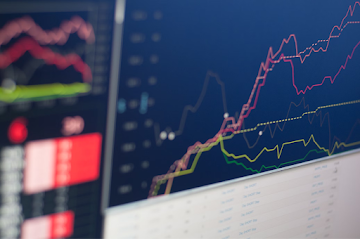Trump meets Milei and promises support without bailout
The United States is negotiating a $20 billion swap line with Argentina’s central bank and preparing to buy Argentine dollar bonds, Scott Bessent said on Wednesday, confirming Washington’s plan to give direct financial backing to President Javier Milei.
The announcement followed a high-stakes meeting held Tuesday in New York between Donald Trump and Milei, during the UN General Assembly.
The statement, made by Scott on X, came with a warning that Washington is moving closely with Buenos Aires to avoid another market crisis. “We are working in close coordination with the Argentine government to prevent excessive volatility,” Scott wrote.
This report is based on information from Bloomberg, which first revealed the U.S. government’s intentions to intervene. Within minutes of the post, Argentina’s dollar bonds cut earlier losses, with traders betting on stronger support coming from Washington.
Trump meets Milei and promises support without bailout
Donald Trump, sitting beside Javier Milei during their first official bilateral meeting, said, “He’s done a fantastic job… We’re going to help them. I don’t think they need a bailout.”
Trump did not provide a timeline or terms of support, but a White House official later said an announcement would follow. Trump also voiced public support for Milei’s reelection in 2027, despite elections being over two years away.
Ahead of the meeting, Scott had already said “all options” were being looked at to help Milei’s team avoid another collapse. That alone had been enough to push Argentine markets upward, as expectations of a financial package built throughout Monday. After Trump and Milei’s meeting wrapped up on Tuesday, Argentine bonds maturing in 2035 jumped more than two cents, trading at over 59 cents on the dollar. The peso rose by 3.7% by the market close.
Milei now heads into an October 26 midterm election that will replace half of Argentina’s Congress. That vote will determine how much of his agenda can realistically move forward. His austerity program has cut public spending while trying to keep inflation under control, but the economic pain has spread.
Economists warn overvalued peso still threatens economy
Analysts across financial firms say the Argentine peso is still far too strong. Barclays believes the real exchange rate should be 30% weaker. StoneX and One618 say it’s closer to 20%. Ramiro Blazquez, a strategist at StoneX, said, “I’d say an exchange rate between 1,500 and 1,600 pesos per dollar is more logical for Argentina.” As of Monday, the peso stood at 1,408.
Milei’s plan involved two tools — cutting the budget and holding the peso firm. That plan did bring inflation down from 200% to 33.6% in just a year, but now that strategy is hitting a wall. Too many Argentines are spending money abroad. Meatpackers are importing beef, even though it’s one of Argentina’s top exports. And with the peso too strong, exporters can’t compete while domestic demand remains weak.
The government had let the peso fall faster in recent weeks, pushed by investor pressure. But many believe it hasn’t been enough. The $20 billion IMF deal signed earlier in the year requires Argentina to run a current account surplus of $10 billion a year. That goal, said Juan Manuel Pazos of One618, is impossible without a dollar-peso rate of 1,650 to 1,700.
After a major local defeat in Buenos Aires earlier this month, Milei is expected to delay any deeper devaluation until after the midterms. But the expectation is already building. “After the elections, the government will need to move in that direction — if it dares,” said Pazos.
Scott added on Monday that Washington remains committed to “all options for stabilization.” That alone has already drawn more interest toward the peso. But economists warn this optimism could backfire. Robin Brooks of Brookings said on X, “The promise alone will lift the peso without any actual intervention… Problem is that this makes Argentina’s overvaluation worse, not better.”
Want your project in front of crypto’s top minds? Feature it in our next industry report, where data meets impact.
You May Also Like

Nasdaq-listed crypto treasury GD Culture to add 7,500 BTC after Pallas Capital acquisition closes

BlockDAG’s Upcoming Sponsorship, Chainlink’s Hesitant Breakout, and Litecoin’s Flat Growth: Best Long Term Cryptos
